Mission to Chukotka: The journey north
The people of Little Diomede in Alaska and Big Diomede in Russia had been trying to arrange reunions for years. In July, Alaska Dispatch News’ Kirsten Swann flew to Chukotka Years to follow along with an expedition, years in the making, that would spend two weeks traveling Russia’s Bering Strait coastline seeking and documenting the shared history across the strait.
(This is the second of three parts. Read parts one and three.)
——-
Etta Tall picked her way up the hillside above the city, scanning the ground, searching for a sign.
The early morning air was crisp and cool. The rocky slope reminded her of Little Diomede, her childhood home. She stopped to sip water running out of a metal pipe protruding from the ground: It tasted fresh like Diomede, too. On the streets below, people moved silently between towering apartment complexes. On the peak above, a flag flapped in the breeze. Tall climbed toward it.
That’s when she saw them, clustered in patches of green between the rocks — vibrant miniature fireweed, velvety polygonum bistorta and young hedysarum alpinum, otherwise known as eskimo potatoes.
“Wow, masu,” Tall said, kneeling in the grass and using the plant’s Inupiat name. “I gotta take a picture of that!”
She dug for her cellphone in her kuspuk pocket, then snapped a photo. The vibrant earth looked just like Alaska.
“I feel at home,” she said.
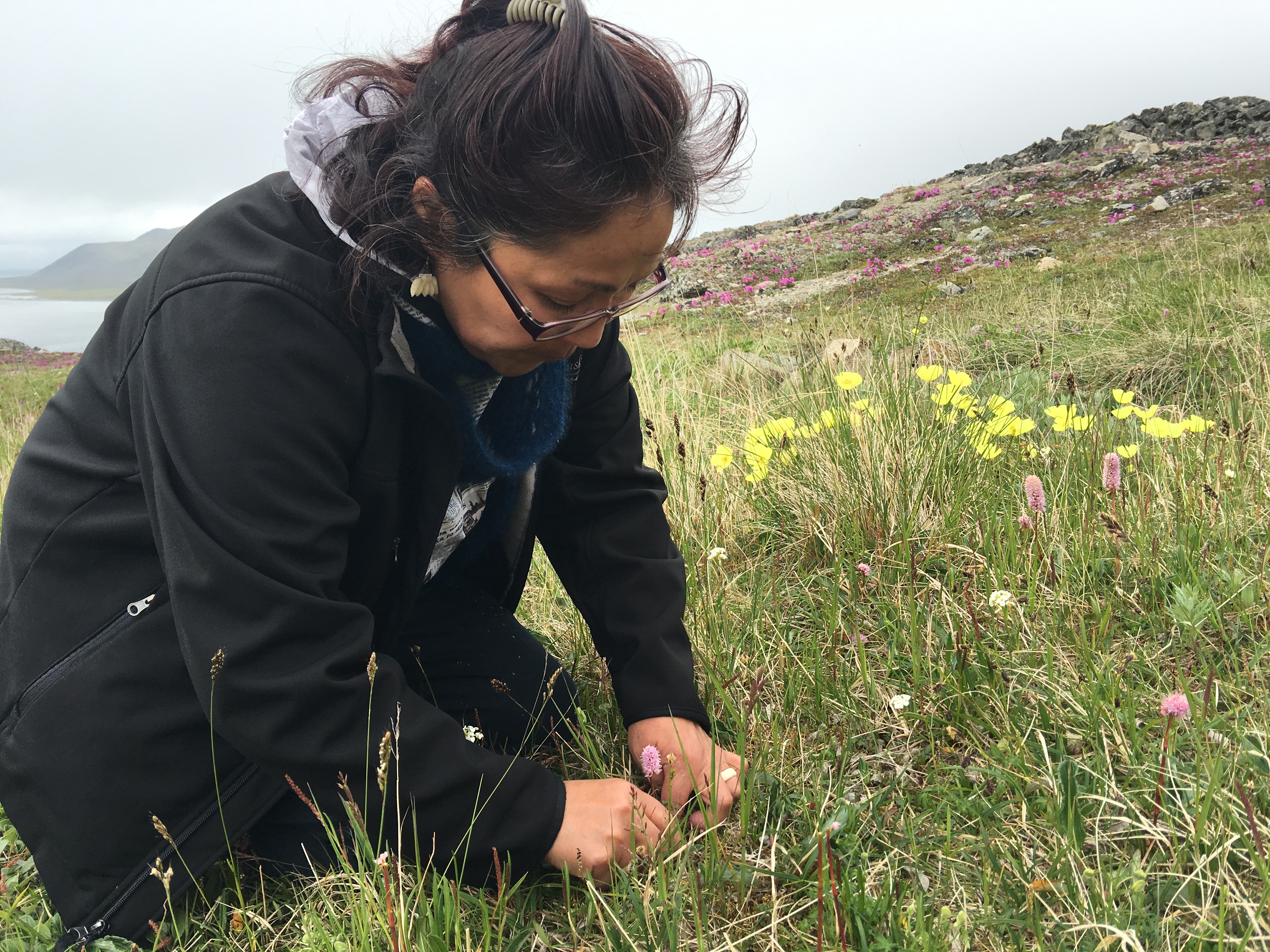
But this wasn’t Alaska. The flag on the hillside was Russian, and the city below was Provideniya, Chukotka, a fading port community approximately 233 miles and one International Date Line away from Nome. The two lands share connections generations deep.
Yet these days, Americans don’t visit often.
Nobody does.
A start in Provideniya
Tall, born on Little Diomede, had traveled to Chukotka the day before, part of an Anchorage-based expedition to revive relationships across the Bering Strait.
The party planned to spend two weeks in Russia. They’d voyage more than 100 miles north, stopping in communities along the way. For Tall, the trip was personal: She hoped to follow in the footsteps of her grandfather, Michael Kazingnuk, finding lost relatives with roots on Big Diomede.
The journey would start in Provideniya.
When the plane taxied up to the gate, the travelers were met by a cluster of uniformed officials outside the terminal. The worn blue and white building bore signs written in letters Tall couldn’t understand.
Inside, the bags were X-rayed and weighed. Migration slips were filled out and signed. Papers were examined; passports stamped. Finally, the group emerged into the gravel parking lot in front of the airport, then loaded onto the bus for the brief, bumpy ride into town.
The road around Provideniya Bay stretches for nearly eight miles, curving past crumbling, Soviet-era military buildings and rocky, rolling, treeless hills. Abandoned greenhouses overflow with unkempt vegetation.
Provideniya itself is bright and bleak; elegant and desolate. Women in full makeup walk down crumbling sidewalks in high-heeled shoes. Wildflowers grow up around rusting metal. Multicolored apartment complexes sit among deserted concrete buildings. Once home to some 5,000 residents, the population plummeted following the fall of the Soviet Union. Now only about 2,500 live there. Much of the old infrastructure remains; the skeleton of the former city.
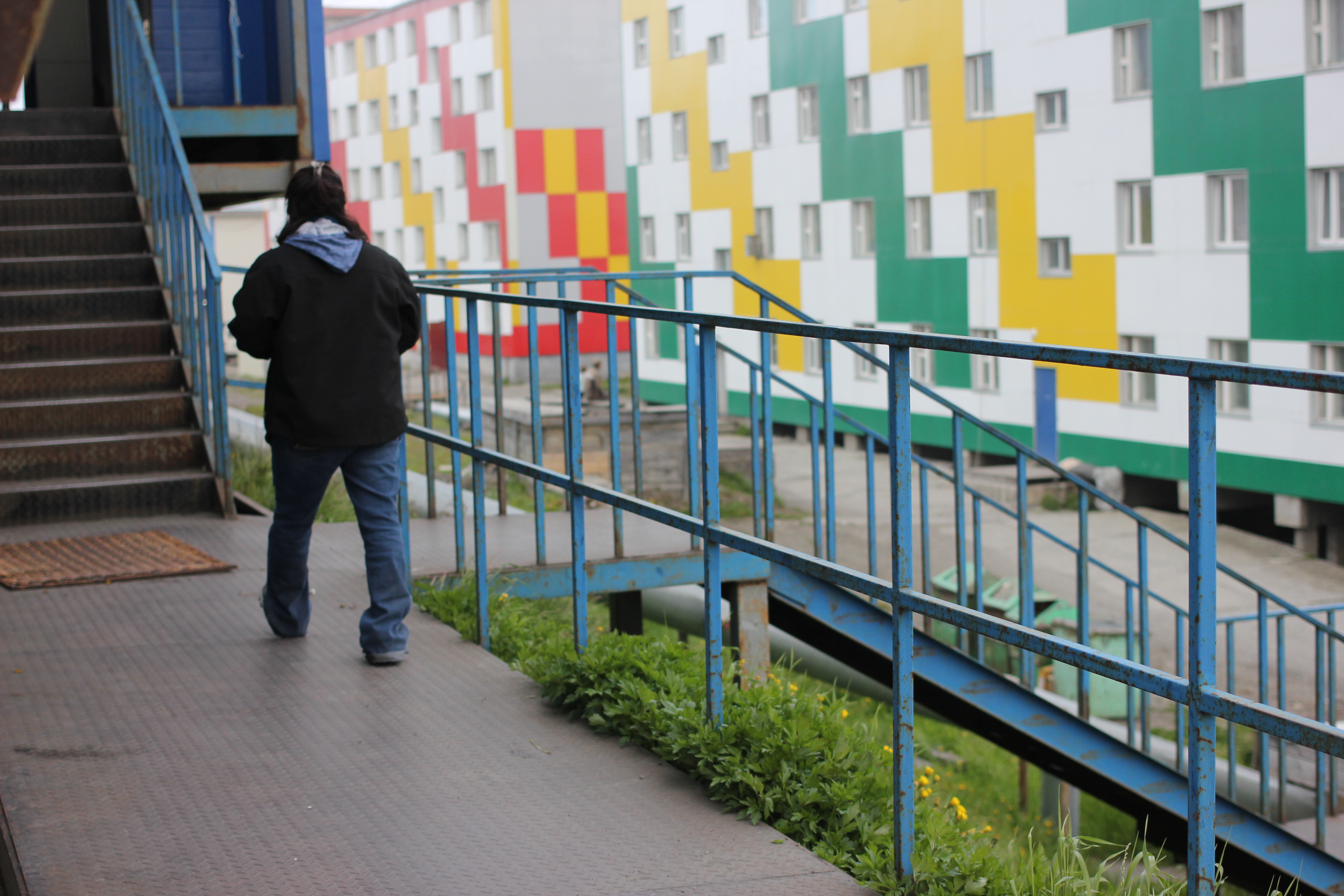
As the tourists pulled into town, people stopped to stare. Children playing along the road giggled and grew still when they passed.
“American?” asked one old man in the street. “Trump? Hillary?”
Others were curious: What brought the Americans to the remote, easternmost end of Russia?
On paper, the answer was easy: Tourism. In reality, it wasn’t so simple.
The other members of the group were documentarians and writers and self-described “adventure travelers.”
David Ramseur, a writer and former political staffer, was gathering interviews for a book on the political relationship between Alaska and Chukotka. In 1988, he traveled between the two places aboard the renowned Alaska Airlines Friendship Flight — a symbolic excursion carrying government dignitaries and Alaska Native relatives to Russia following the decades-long separation during the Cold War.
The trio of filmmakers, led by acclaimed Mexican wrestling photographer Lourdes Grobet, were shooting a documentary about the Bering Strait region, focusing on Tall and her search for family.
Dr. Diddy Hitchins, a University of Alaska Anchorage political science professor emerita and British Honorary Consul in Alaska, was taking the trip because, of all the many parts of Russia, this was one she’d never seen.
The same moves
On the first night in Provideniya, after the travelers settled into their rented apartment rooms, Tall slipped out the front door and climbed the dark, uneven staircase to another apartment in the same building.
Earlier that day, she’d met two Russian women, members of the local Native dance group. They invited her to come visit. She couldn’t wait.
Natalia Tatapiya’s apartment was hot and colorful. While she spoke little English, she swept Tall into a hug. In a back room, Tall pored over old photographs and Chukotka history books. There were pictures of Native people who looked similar to her own relatives, and images of homes and hunts like she used to see on Little Diomede.
The women were soon joined by others from the dance group, Irina Mecheryakova and Gulnara Rodionova, who translated Russian to English and back again.
Tatapiya brought tea: strong and sweet, served with crumbly biscuits and bowls of Russian candy. The Russian candy reminded Tall of her childhood, and a long-ago winter when people from Little Diomede had gone to meet Russians on the ice at the border. Tall didn’t know who they were, or why they went to meet them; only that the Russians brought candy in colorful wrappers.
Huddled around a low table in Tatapiya’s sitting room, Tall told the women about the journey ahead, her grandfather and the lost relatives she hoped to find. Mecheryakova told Tall about her own mother, a woman named Margarita Gluhih, who once traveled to the Diomede Islands.
Tall had heard about a woman named Margarita, too, she said. Could it be the same woman? There was a dance named after her; one Tall still remembered. Then all together, the women began to dance. They didn’t speak the same language, but they knew all the same moves.
Margarita can tell you about Diomede, Mecheryakova said. She lives in Lavrentiya. Go there.
Before Tall returned to her own room that night, her Russian hosts pulled her into the kitchen. A salty, sour smell filled the air. On a table in the corner, Tatapiya placed bowls of fresh seaweed and walrus, a cutting board, an ulu, a container of salt and a paper plate. Eat, she said.
Chop. Chop. Chop. As the ulu sliced through glistening chunks of intestine and breast meat, Tall savored every bite. The flesh reminded her of home, she said. It filled her belly with warmth.
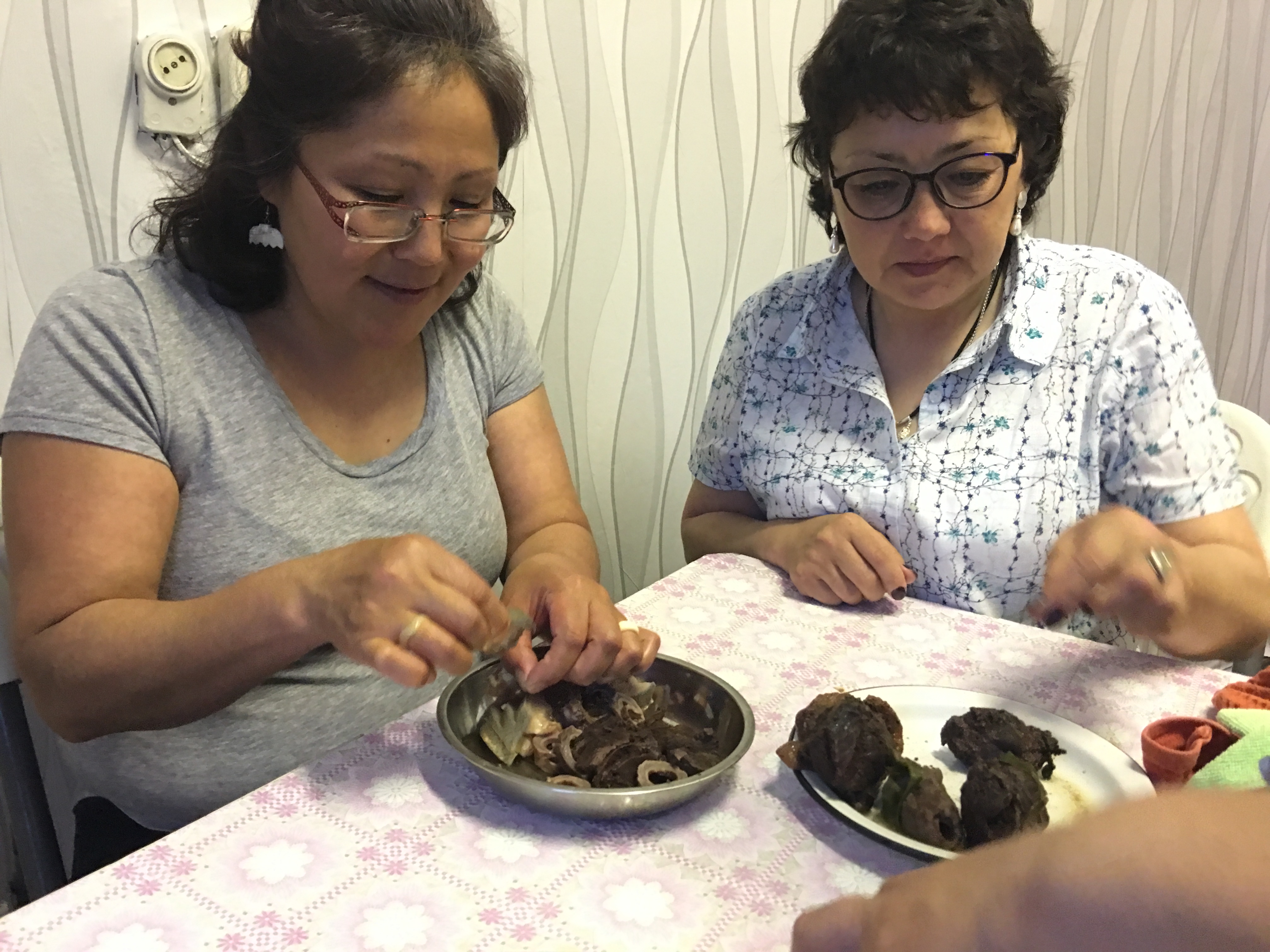
Hopes for tourism
The road out of Provideniya is unpaved and narrow.
Most travelers go by six-wheel bus. The massive, sturdy vehicle makes regular trips between the sleepy port city and the neighboring community of Novoye Chaplino. The Circumpolar Expeditions group took the bus even further than that — up an unmaintained, rough-cut trail, through clear streams and shallow valleys to a hunting camp at Rumilet Bay.
There, the bus was met by a trio of 18-foot aluminum boats and a local crew. Bags were unloaded from one vehicle and reloaded into the other. Matching orange life jackets were distributed. After one final scramble, they were off.
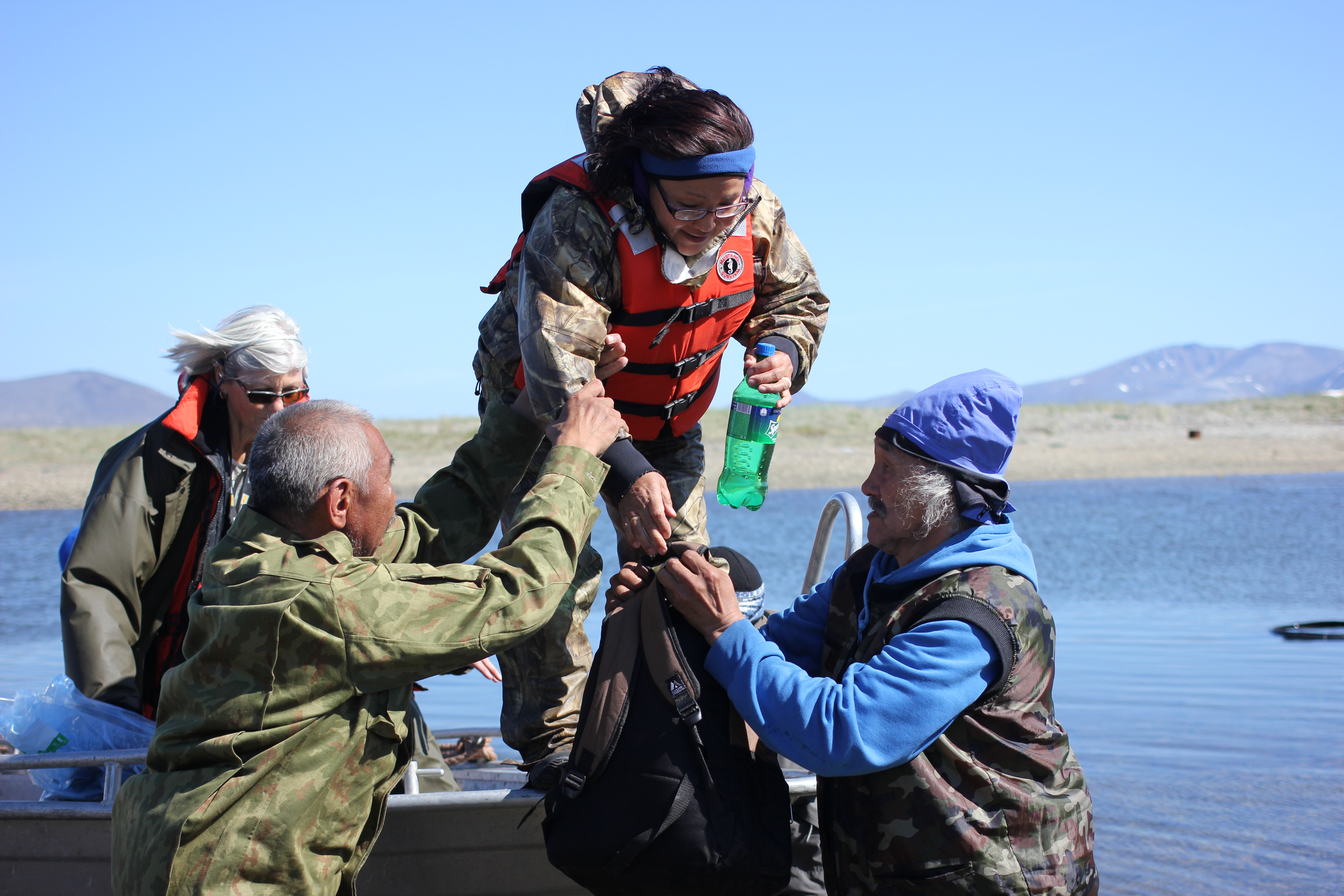
As they skipped across the surface of the water, gray whales spouted and surfaced around them. Seabirds dipped beneath the waves and soared overhead. The first stop: a camp along the shore of remote Senyavin Strait.
Nestled at the head of a vast, treeless valley, the camp encompassed a collection of rough cabins, an outhouse and a steaming pool built into a natural hot spring on the hillside.
That evening, travelers unfurled their sleeping bags on wooden bunks and in borrowed tents. They dined on bread, tea and fresh fish head soup prepared by a Chukchi woman at the camp. The steaming pot of soup answered one of Tall’s burning questions.
“I always wondered what they eat, but now I know,” said Tall, sipping around the silver fish head staring up at her from her bowl. “They’re just like us.”
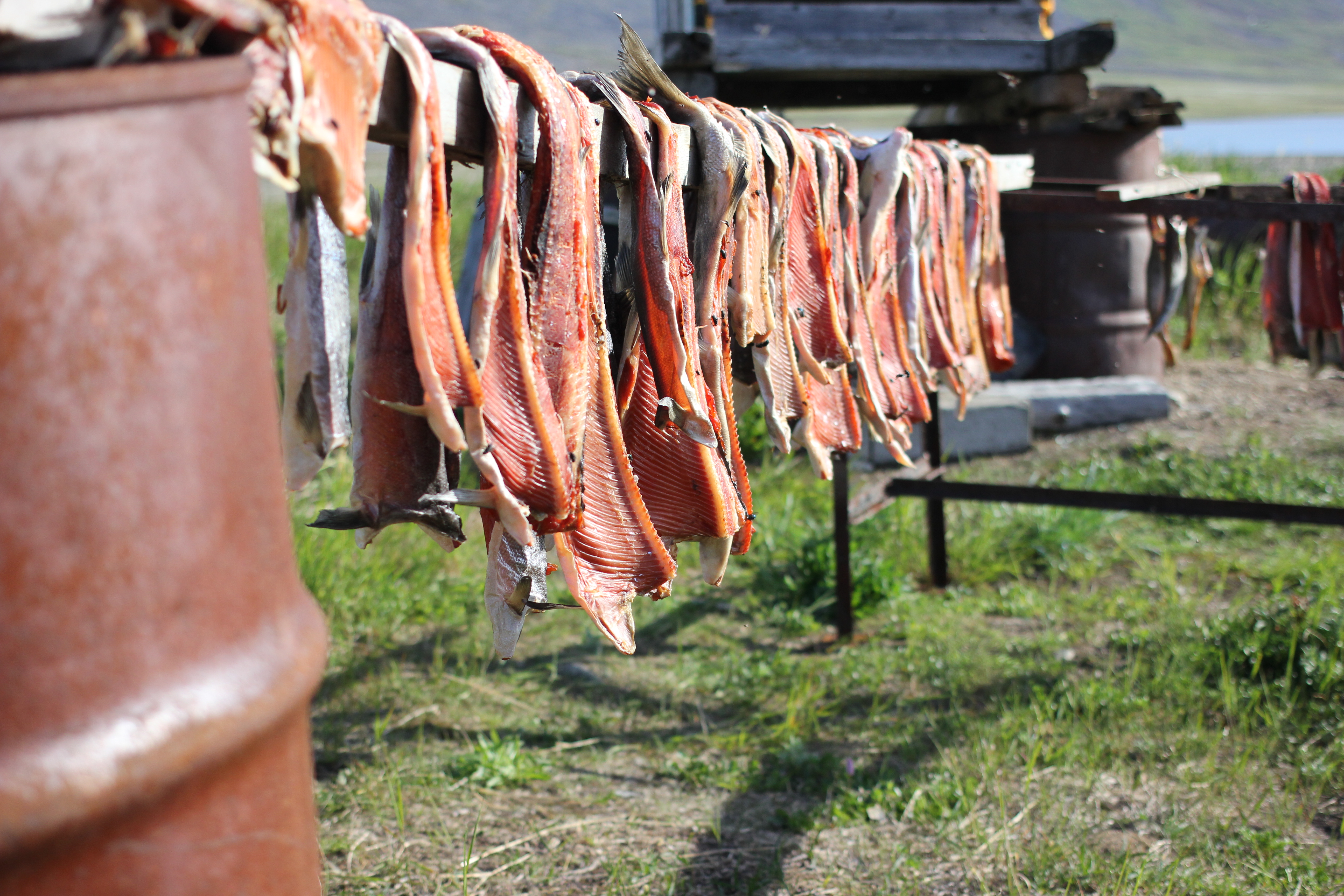
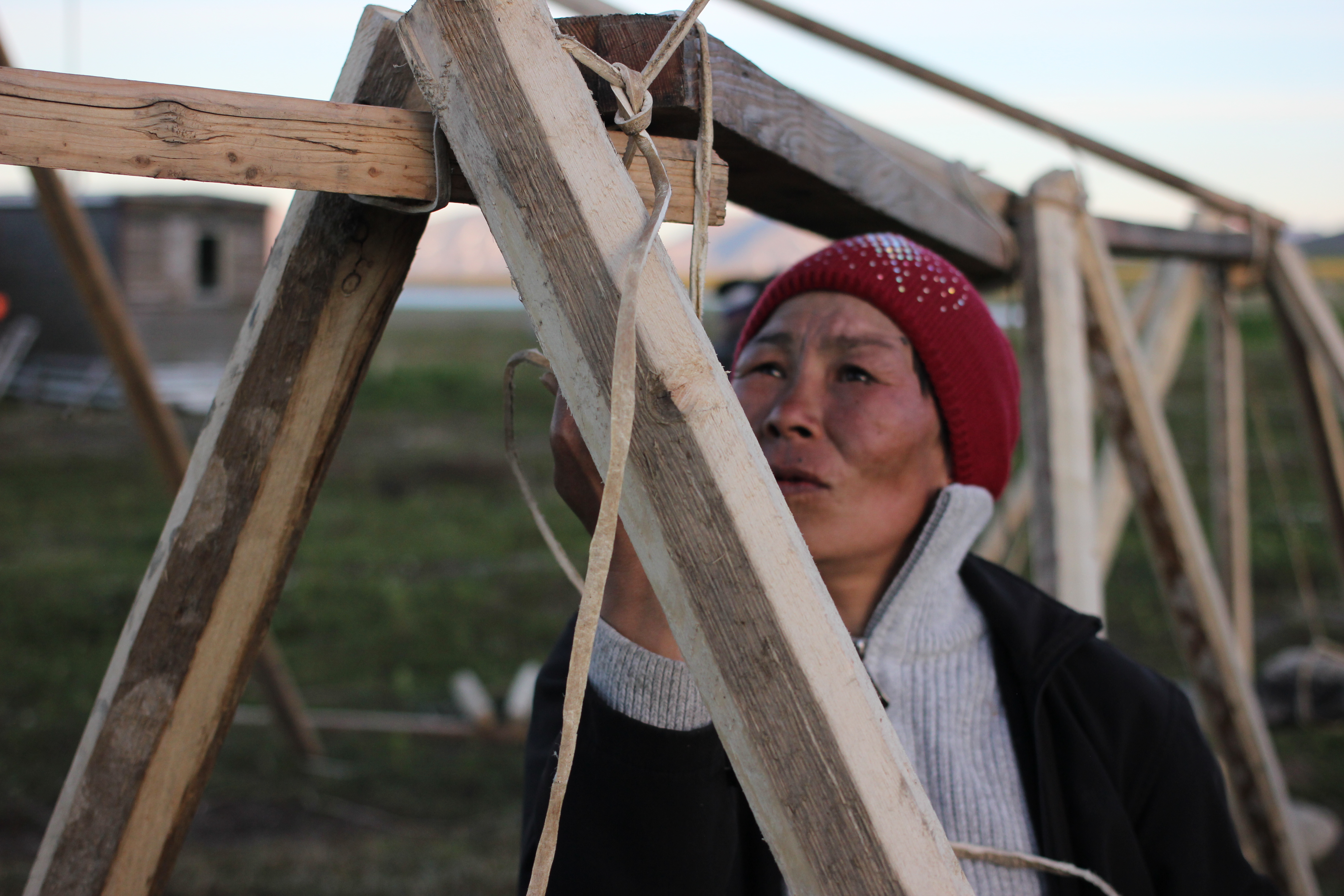
(Kirsten Swann / Alaska Dispatch News)
With the late afternoon sun arching across the arctic sky, the Chukchis built a yaranga — a mobile dwelling assembled with reindeer hides and wood. The structure uses no nails; just sealskin cords made by skinning the animal in one narrow, continuous stroke.
The yaranga would house Chukotka people staying at the hot springs camp for the summer. The cabins had room for about a dozen others. There are few tourists in this corner of the world.
Little by little, park officials hoped to see that change.
“Tourism is a profitable industry in Alaska,” said park director Vladimir Bychkov. “I hope also to develop tourism in Chukotka, because Chukotka and Alaska are neighbors.”
Alaska, with its $4 billion tourism industry, welcomed more than 2 million visitors during the 2014-15 season. By contrast, Chukotka expects only about 1,000 visitors this year. For the most part, they come to see Beringia National Park, a roughly 4.4-million-acre idyll spanning much of Chukotka’s west coast.
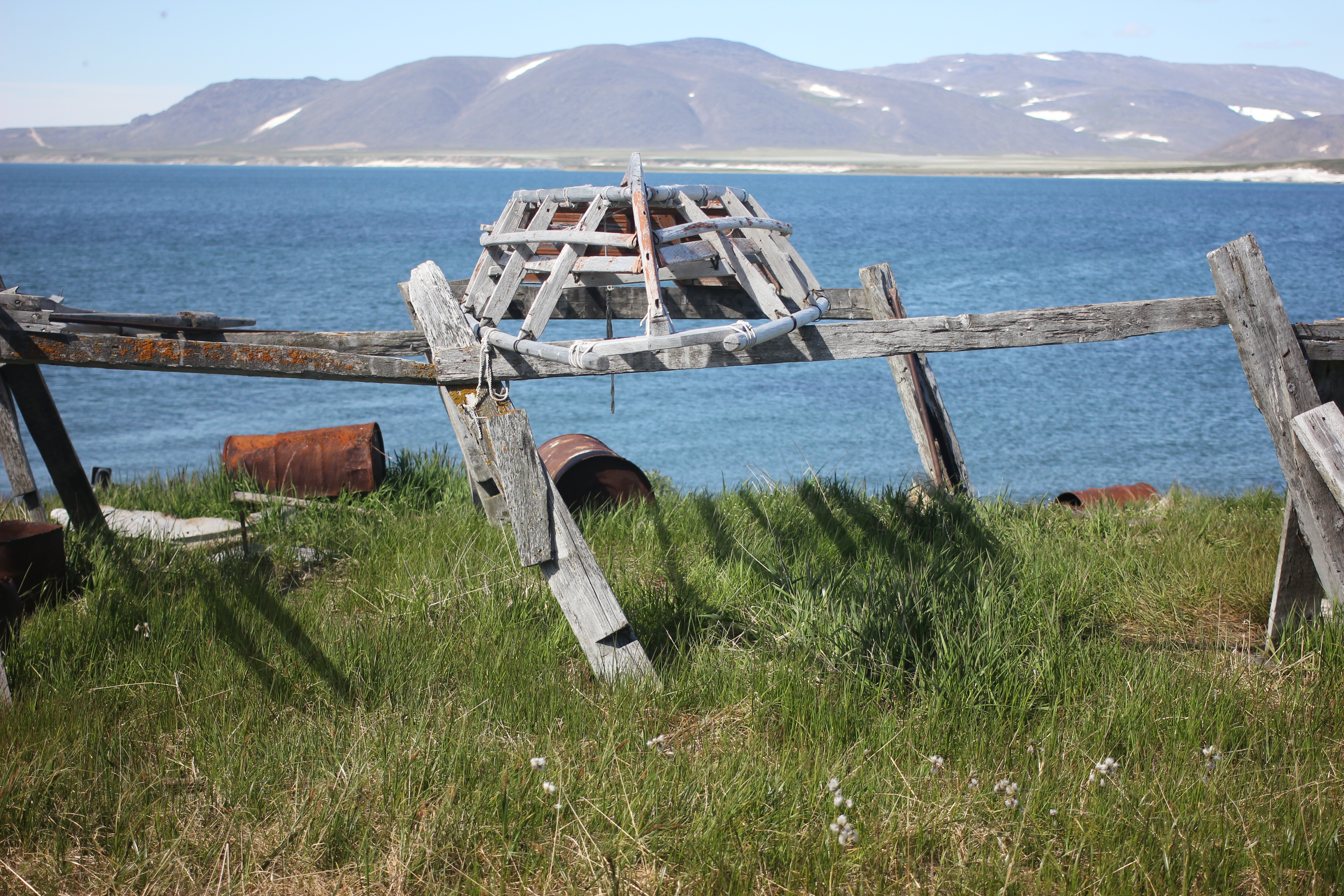
Bychkov, an industry veteran, is closely familiar with the logistical challenges facing tourism in Chukotka. It’s similar to Alaska, and unlike most other places on earth.
There are language barriers. Travel here is taxing, physically and financially. There are no road connections. Air travel is almost nonexistent. Most tourists come on cruise ships between July and September, make brief landfall, look around for a few hours, then return to their staterooms and continue on their journeys, Bychkov said. Tickets on those cruise ships start at around $6,700, climbing sharply from there.
Trips like Circumpolar Expeditions’ are rare.
Eventually, the park director said, Beringia hopes to add more small cabins and infrastructure for travelers wishing to explore by boat, snowmachine or mountain bike. Still, with so few tourists, communities lack the economic resources to attract more.
“It’s not an easy business,” Bychkov said.
Tandy Wallack described it a different way.
“I mean, all these logistics are just a nightmare,” she said, sitting behind the hot spring cabin that evening.
When everything comes together, though, the payoff is unforgettable.
Traveling north
The next morning, the expedition loaded back into the boats and pushed back off into Senyavin Strait. The water below was clear as glass; the sky above was cloudless blue. The air was filled with sunshine and the submerged roar of the Yamaha outboard motors.
For the next several days, the expedition traveled north, pausing only briefly to eat and sleep and stretch legs along the way. The travelers passed through villages where snowmachines are replacing dog teams; where strips of whale and fish hang still hang outside windows to dry; where a brand new cable television tower sits among peeling Soviet-era apartments.
At Yanrakynnot, about 80 miles north of Provideniya, the youngest boat drivers napped on the beach while the group’s papers were scrutinized by a uniformed guard.
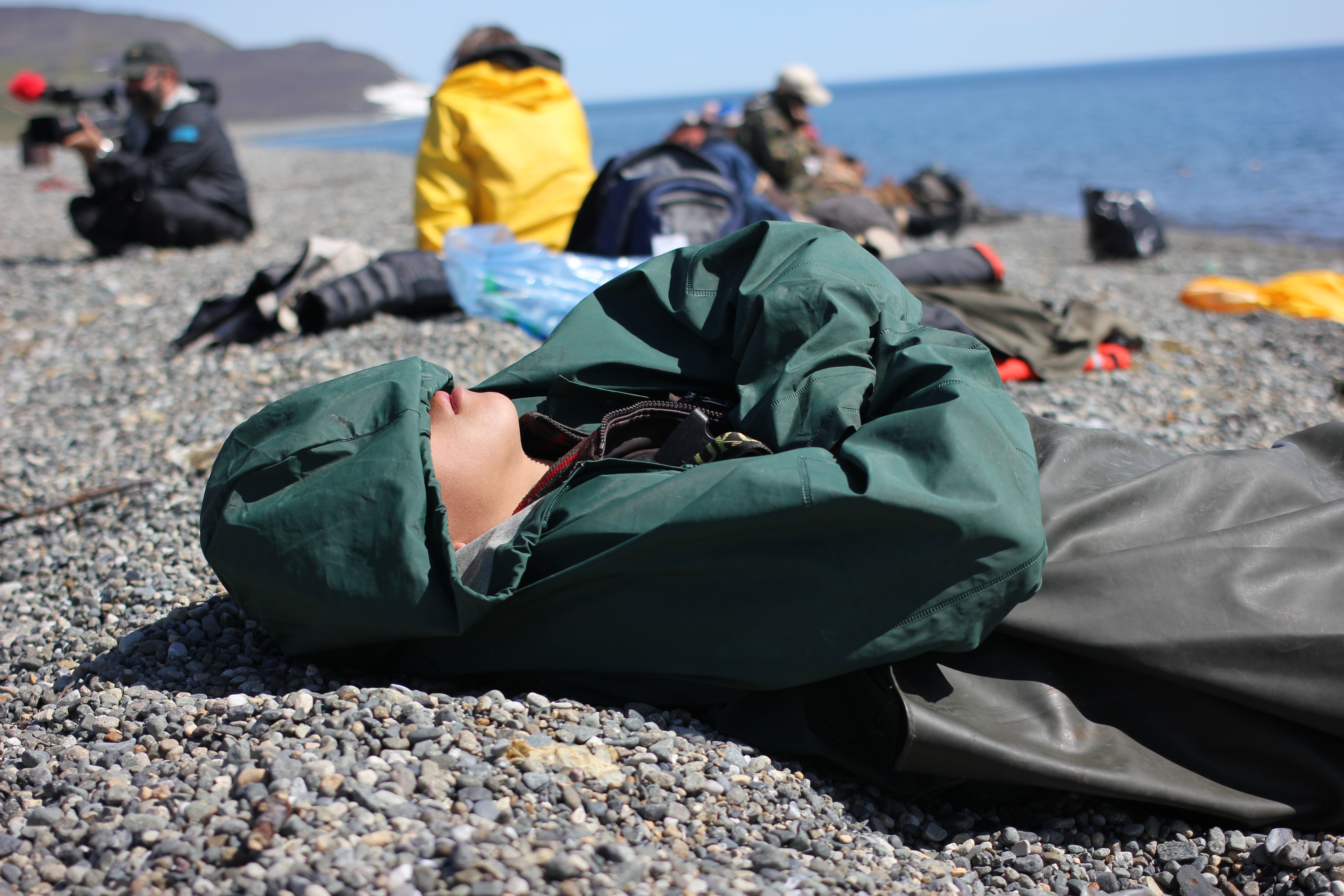
At Getlyangen Lagoon, the travelers lunched on gray whale and walrus and pilot bread and peanut butter, kneeling to eat on the loose pebbles along the shore.
At the ancient, abandoned settlement at Mechigmen, they hiked over piles of whale bones overgrown with tall grass, and strolled through massive ribcages whitened by decades of sunlight— a place few tourists ever see.
At Lorino, the boats were hauled onto the beach on whalebone skids, and the group was welcomed with a performance by the local dance group. The girls wore colorful kuspuks; the boys wore skin parks. Just like Alaska. Tall took pictures on her phone — then stepped across the sand to dance with them.
In every community, she carried her grandfather’s book. She told the story to the curious Chukchi and Yupik people she met on every beach. She showed them the words written in spidery English cursive, and sounded out all the old family names she’d learned by heart.
Few of the people she met spoke any English. They watched and they listened. Could they understand her? Tall wasn’t sure.
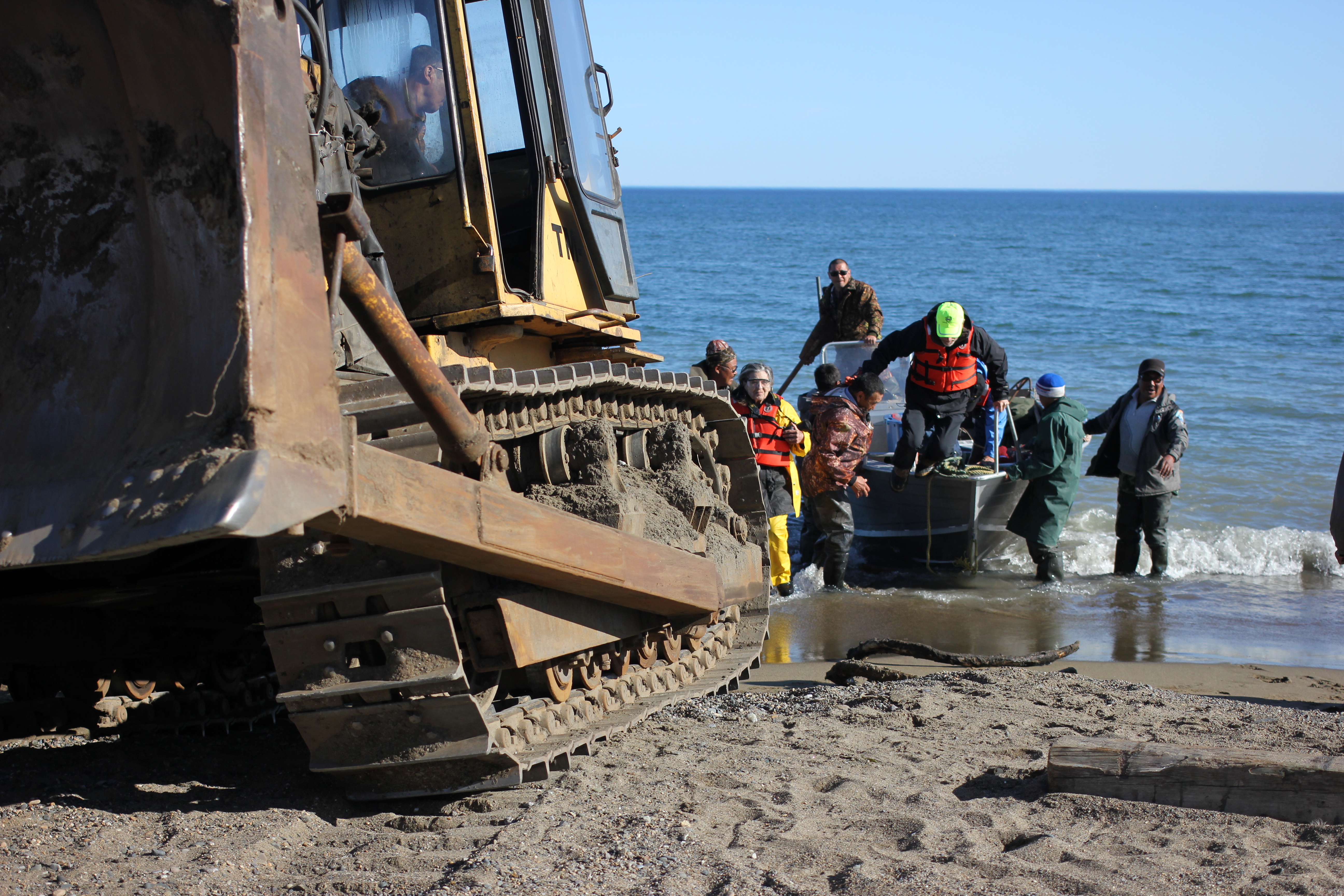
Throughout the trip, the Circumpolar Expeditions group relied on the language skills of Oksana Yaschenko, Beringia National Park’s deputy director of ecological education and tourism, a young Russian woman who speaks fluent English and holds a master’s degree from the University of Alaska Fairbanks. For two weeks, Yaschenko translated for the tourists, the boat drivers, the border guards, the local administrators, the apartment proprietors and everyone in between.
But she could only translate one conversation at a time. Often, Tall found herself alone, struggling to explain generations worth of family history, speaking a language it seemed few Russians could understand.
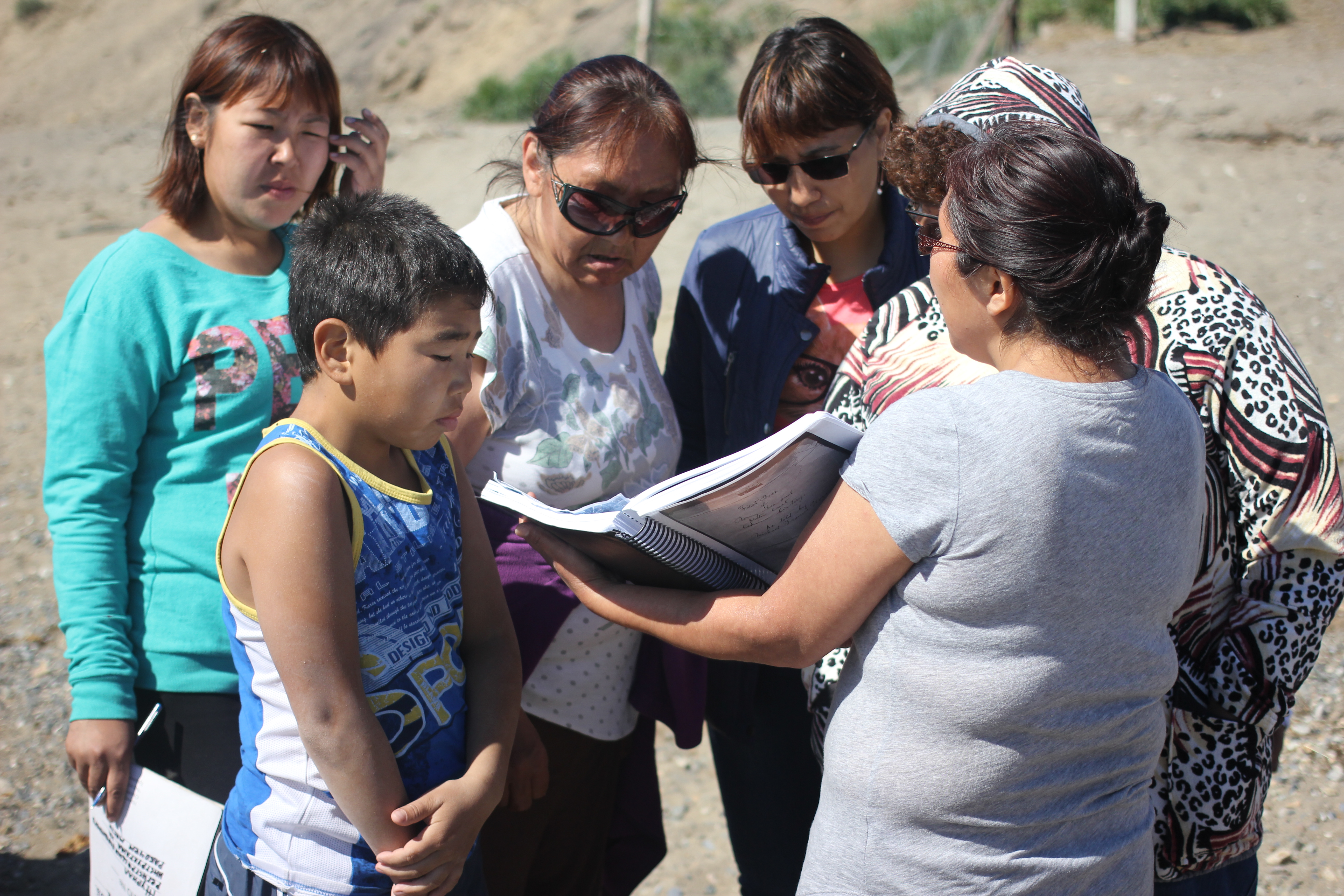
Still, they found ways to communicate. During ladies’ night at the Lorino banya, Tall sat side by side with the local babushkas in the sweltering sauna, then told them about her grandfather, and the reason why she’d traveled so many miles to be here.
“He came from BIG. DIOMEDE,” she said, as they shared tea and cold juice afterward, wrapped in towels in a breeze-filled dining room.
“Ah,” the Chukchi women said. “Russian!”
They recognized Big Diomede. They knew of people who’d traveled between Alaska and Chukotka. But they didn’t know anybody called Kazingnuk.
A prayer for the camera
The following day, the expedition piled back into the boats to make the final push north.
In Tall’s boat, captain Vladimir Piny played Russian dance music through an MP3 player on the dashboard, chain-smoking Winstons next to the 50-gallon drum of fuel. When the coastline curved inward, Piny headed for open water, prow pointed toward an outcropping of black rock in the far distance. The water got bigger in every direction. The three boats — all with different motors and loads — became separated among the waves.
An hour passed. Longer. Slowly, the black rocks in the distance grew larger. Ahead lay Cape Dezhnev, and the narrowest point of the Bering Strait. The Alaska coast lay just 50 miles to the east. The Diomede Islands sat somewhere in between.
Then there it was; a dark shadow on the distant horizon. Big Diomede.
The boats stopped, bobbing like corks in the Bering Strait. The documentary film crew turned their lenses and microphones to Tall.
Look, they said, cameras rolling. It’s Big Diomede. How about you say a prayer for the camera?
Tall stood up in the boat, balanced against the waves. She looked toward the distant shadowy island. She thought about her grandfather sailing these waters nearly 100 years ago, and the many years it took her to come back.
The camera lens stared up at her.
“Uh…” she said. “Quyana, Jesus!”
Previously: Mission to Chukotka
Next: What Etta found
Kirsten Swann is a journalist living in Anchorage. She writes for Alaska Dispatch News’ 61° North magazine and ShowMeAlaska.net.